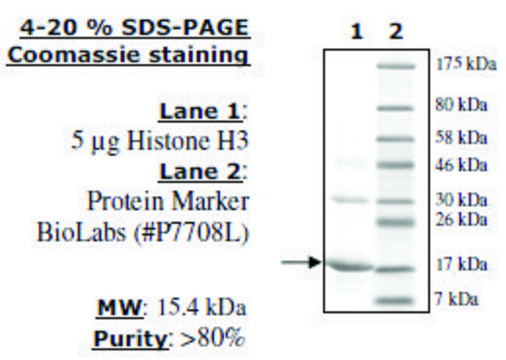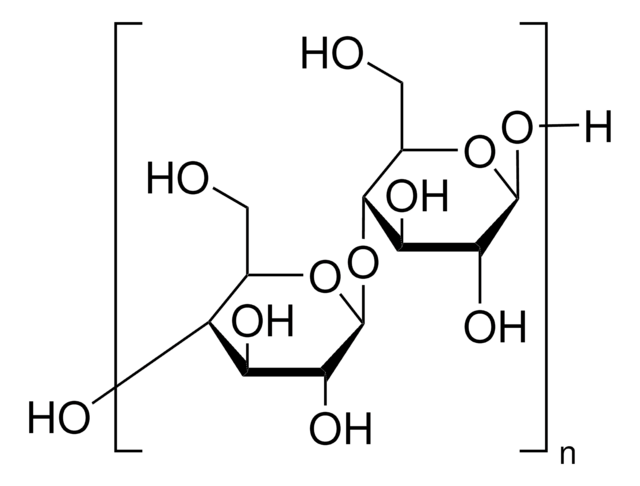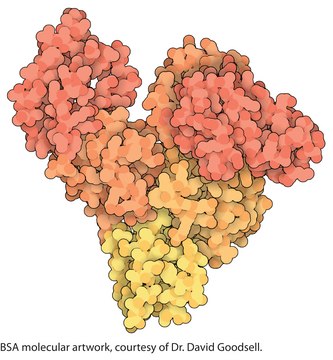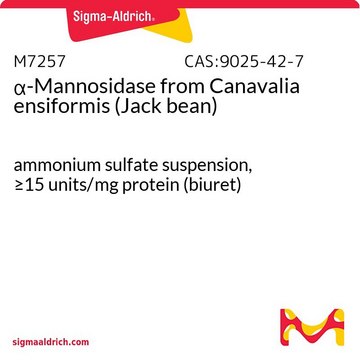Recommended Products
biological source
bovine eye (lens)
Assay
≥95% (biuret)
form
powder
technique(s)
UV/Vis spectroscopy: suitable
impurities
Salt, essentially free
storage temp.
−20°C
General description
β-Crystallin is the most heterogeneous of the crystallin classes, with at least six different gene products, at least ten different post-translational modifications, and quaternary structure variants from dimers to octamers. However, all sequences are highly conserved through evolution.
Application
βL-Crystallin is one of the major lens proteins that aggregates under UV. A chaperone mixture of D-pathethine and N-acetyl carnosine has the ability to slow down the rate of photoaggregatin βL-Crystallin, and may be important in the prevention of cataract.
Storage Class Code
11 - Combustible Solids
WGK
WGK 3
Flash Point(F)
Not applicable
Flash Point(C)
Not applicable
Personal Protective Equipment
dust mask type N95 (US), Eyeshields, Gloves
Regulatory Information
新产品
Choose from one of the most recent versions:
Already Own This Product?
Find documentation for the products that you have recently purchased in the Document Library.
J Horacio Espinoza et al.
Journal of photochemistry and photobiology. B, Biology, 167, 15-19 (2017-01-01)
The damage produced by UV-C radiation (100-280nm) in organisms and cells is a well known fact. The main reactions of proteins to UV-C radiation consist in the alteration of their secondary structures, exposure of hydrophobic residues, unfolding and aggregation. Furthermore
Our team of scientists has experience in all areas of research including Life Science, Material Science, Chemical Synthesis, Chromatography, Analytical and many others.
Contact Technical Service







